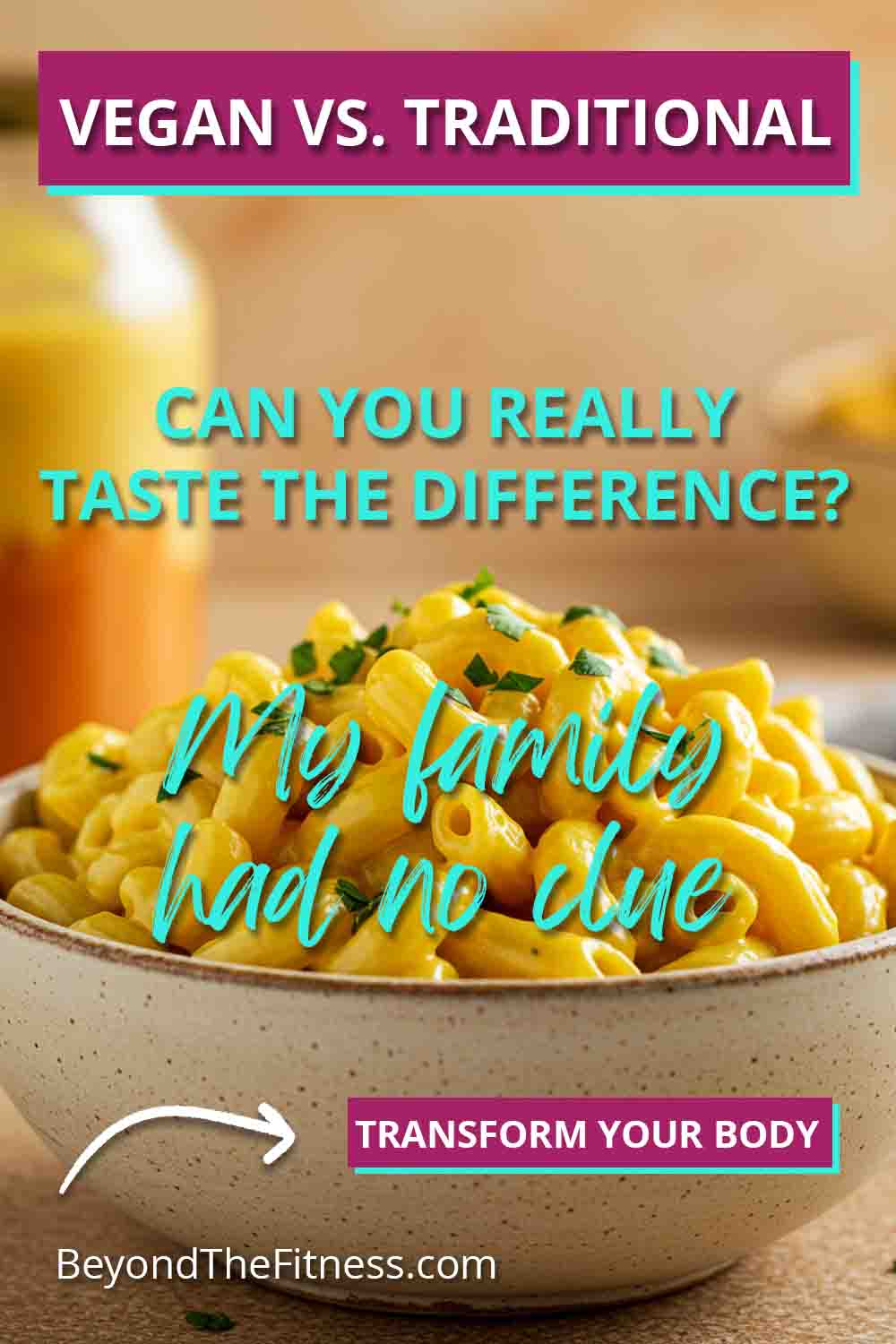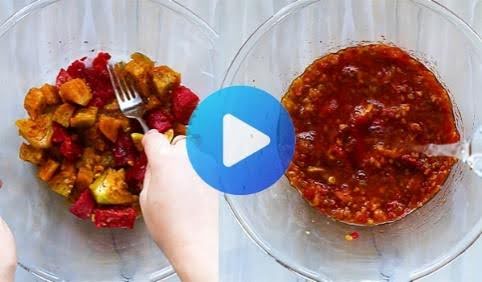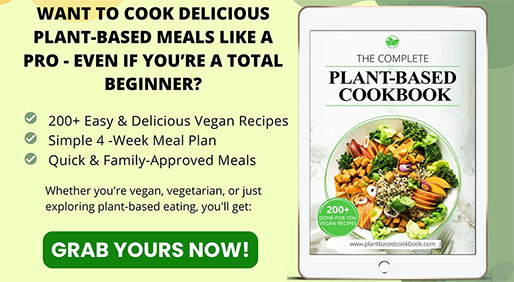More and more people I talk to are curious about vegan eating. Maybe you’ve seen cool vegan recipes online or heard about health benefits. A big question always comes up though: does vegan food taste as good as the traditional food we’re used to? Especially when you’re thinking about health goals, like managing weight or just feeling more energetic, you want food that tastes good and helps you feel good. Let’s explore this whole taste thing together.
What Makes Food Taste Good Anyway?
Before we compare vegan and traditional foods, let’s think about taste itself. It seems simple, but it’s kind of amazing. We have taste buds on our tongues that pick up five main tastes: sweet, sour, salty, bitter, and umami. Umami is that savory, meaty taste you get from things like mushrooms, tomatoes, and meat.
But taste isn’t just about those five things. Think about biting into a crisp apple versus eating applesauce. The texture is totally different, right? That crunch or smoothness is a big part of the experience. Smell is huge too. Ever walk into a kitchen where someone is baking cookies? You smell it before you taste it, and that smell makes your mouth water. How food looks also matters. Bright, colorful food often seems more appealing than something dull.
Insider Tip: Enjoying Healthy and Flavorful Plant-Based Dishes with The Complete Plant Based Recipe Cookbook
So, when we ask if vegan food tastes different, we’re really asking about a whole package: the basic tastes, the texture, the smell, and even how it looks. It’s a full sensory experience.
What’s the Main Difference in Ingredients?
The core difference is simple: vegan food contains absolutely no animal products. That means no meat, poultry, fish, dairy (milk, cheese, yogurt, butter), eggs, or even honey for strict vegans. Traditional diets often include many of these items.
So, what do vegans eat instead? Lots of things.
- Plant-Based Proteins: Instead of meat, vegans might eat tofu (made from soybeans), tempeh (fermented soybeans), seitan (made from wheat gluten), lentils, beans, chickpeas, and nuts and seeds.
- Dairy Alternatives: There are tons of plant milks now made from almonds, soy, oats, cashews, rice, hemp, and more. Vegan cheese has come a long way, often made from nuts, soy, or oils. Vegan butter is usually made from plant oils. Nutritional yeast is a flaky, deactivated yeast that has a cheesy, nutty flavor and is great sprinkled on popcorn or pasta.
- Egg Replacements: For scrambling, seasoned tofu works well. In baking, things like applesauce, mashed bananas, flax seeds mixed with water (“flax egg”), or commercial egg replacers can be used for binding and moisture. Aquafaba, the liquid from a can of chickpeas, can even be whipped like egg whites.
These swaps are key to understanding potential taste differences. Sometimes the goal is to mimic the original animal product very closely. Other times, vegan dishes celebrate plant ingredients for what they are.
How Does Nutrition Compare?
From a fitness and weight loss perspective, the nutritional differences are important. How we fuel our bodies affects our energy, how full we feel, and our overall health, especially for women who have specific nutrient needs.
- Protein: Traditional diets often get protein from meat, dairy, and eggs. Vegan diets get protein from beans, lentils, tofu, tempeh, nuts, seeds, and whole grains. It’s totally possible to get enough protein on a vegan diet, but it requires a bit more planning to ensure you get all the essential amino acids (the building blocks of protein). Getting enough protein is important for muscle maintenance, especially if you’re active or trying to lose weight, as it helps you feel full.
- Fats: Traditional diets can be higher in saturated fats, found mainly in animal products like red meat and full-fat dairy. Vegan diets tend to be higher in unsaturated fats (found in avocados, nuts, seeds, and plant oils), which are generally considered heart-healthy. However, some processed vegan foods can be high in less healthy fats like coconut or palm oil, so reading labels is still key. Healthy fats are vital for hormone production and overall health.
- Fiber: This is a big win for vegan diets. Fruits, vegetables, whole grains, and legumes are packed with fiber. Most traditional diets, especially those low in plants, don’t provide enough. Fiber is fantastic for digestion, helps control blood sugar, and keeps you feeling full longer, which is a huge help for weight management.
- Vitamins and Minerals: This is where planning is crucial for vegans.
- Vitamin B12: This is mainly found in animal products. Vegans need to get it from fortified foods (like some plant milks, cereals, nutritional yeast) or a supplement. B12 is essential for nerve function and making red blood cells; deficiency can cause fatigue and other issues.
- Iron: Plant-based iron (non-heme iron) isn’t absorbed as easily as iron from meat (heme iron). Vegans need to eat plenty of iron-rich plants (lentils, spinach, tofu, fortified cereals) and pair them with vitamin C-rich foods (like oranges, bell peppers) to boost absorption. Women, especially, need adequate iron due to menstrual cycles.
- Calcium: While dairy is a well-known source, vegans can get calcium from fortified plant milks, tofu made with calcium sulfate, leafy greens (like kale and collards), and almonds. Getting enough calcium is vital for bone health throughout life.
- Vitamin D: Many people, vegan or not, don’t get enough. Sources include fortified foods and sunlight exposure. Supplements are often recommended, especially in places like Toronto during winter.
- Omega-3 Fatty Acids: Fatty fish is a primary source. Vegans can get ALA (a type of omega-3) from flaxseeds, chia seeds, hemp seeds, and walnuts. The body can convert ALA to EPA and DHA (the types found in fish), but the conversion rate can be low. Algal oil supplements are a direct vegan source of EPA and DHA. These fats are important for brain and heart health.
A well-planned vegan diet can be incredibly healthy and support weight loss by being naturally lower in calories and saturated fat, and higher in fiber. But an unplanned one can lack key nutrients. Similarly, a traditional diet can be healthy or unhealthy depending on the choices made.
Let’s Do Some Taste Comparisons
Okay, let’s get down to specific foods. How do the vegan versions stack up against the traditional ones in terms of taste and texture?
Burgers: Plant vs. Beef
This is a big one. Traditional beef burgers have that specific juicy, savory, slightly fatty taste and texture. Vegan burgers have evolved a lot.
- Early Veggie Burgers: Often made from beans, grains, and vegetables. These usually don’t try to taste exactly like meat. They can be delicious, hearty, and flavorful in their own right, but the texture is softer, maybe a bit mushy if not cooked right. Taste varies wildly depending on the ingredients and spices.
- Meat-Mimicking Burgers: Newer brands focus on replicating the taste and texture of beef using ingredients like soy protein, pea protein, potato starch, and coconut oil for fat. Some even “bleed” using beet juice. These can get remarkably close in terms of chewiness, juiciness, and savory flavor. For many people, especially when loaded with toppings in a bun, the difference can be surprisingly small. For others, there’s still a noticeable plant-based undertone or a slightly different texture.
- My Take: I’ve had some amazing vegan burgers that were satisfying and delicious. I’ve also had some that were dry or had an odd aftertaste. The “meat-like” ones can be impressive, but I also enjoy a good black bean burger for what it is. Preparation is key – grilling often gives the best result for mimicking a traditional burger.
Milk: Plant vs. Cow’s
This is probably one of the most common swaps.
- Cow’s Milk: Familiar taste, creamy texture (depending on fat content). Works predictably in cooking, baking, coffee.
- Plant Milks:
- Soy Milk: Often creamy, can have a noticeable bean flavor that some people dislike. Good protein content. Works well in most applications.
- Almond Milk: Lighter, thinner texture, often a subtle nutty flavor. Lower in calories and protein unless fortified. Can sometimes separate in hot drinks.
- Oat Milk: Very popular now. Often incredibly creamy, similar mouthfeel to dairy milk. Mildly sweet taste. Performs well in coffee (barista blends are designed not to curdle). Generally higher in carbs than almond milk.
- Cashew Milk: Creamy, mild flavor. Good for sauces and creamy dishes.
- Others (Rice, Hemp, Coconut): Vary in texture and flavor. Rice milk is thin and sweet. Hemp milk is earthy. Coconut milk (the beverage, not canned) is light with a coconut flavor.
- My Take: For drinking straight or on cereal, the difference is noticeable but often pleasant once you find a type you like. Oat milk is my go-to for coffee because it’s so creamy. In baking or cooking, many plant milks work seamlessly, though very thin ones might slightly alter results. The taste difference is definitely there, but “different” doesn’t mean “bad”.
Cheese: Vegan vs. Dairy
Ah, cheese. This is often called the final frontier for vegan alternatives. Dairy cheese gets its complex flavors from fermentation and aging, and its unique melting and stretching properties from milk proteins (casein).
- Dairy Cheese: Huge variety of flavors (sharp, mild, funky) and textures (hard, soft, crumbly). Melts and stretches in familiar ways.
- Vegan Cheese: Early versions often relied heavily on oils and starches and didn’t melt well, sometimes having a plasticky texture or strange taste. Things are much better now.
- Common Bases: Nuts (especially cashews), soy, coconut oil, tapioca starch, potato starch.
- Taste & Texture: Brands vary hugely. Some are designed to mimic specific cheeses like cheddar, mozzarella, or parmesan. They often use flavorings and nutritional yeast for cheesiness. Melting has improved significantly, though they might not stretch exactly like dairy cheese. Some artisanal nut-based cheeses are cultured and aged, developing complex flavors, but they don’t always melt.
- My Take: This is where the difference is often most apparent, especially when eaten plain. Some vegan shreds melt decently on pizza or in casseroles, and vegan cream cheese can be very convincing. Sliced cheese for sandwiches has improved too. However, achieving the exact taste and texture of aged dairy cheese is still challenging. I find many vegan cheeses are tasty in their own right, but I wouldn’t expect an exact match for my favorite sharp cheddar yet.
Eggs: Plant-Based vs. Chicken
Eggs play different roles – scrambled, fried, or as binders/leaveners in baking.
- Chicken Eggs: Familiar taste and texture when cooked on their own. Essential binding, structure, and richness in many baked goods.
- Vegan Egg Alternatives:
- Scrambles: Seasoned and crumbled firm tofu (often with turmeric for color and black salt/kala namak for an eggy sulfurous taste) is a popular DIY option. It’s texturally different but can be very savory and satisfying. Commercial liquid egg replacers (often mung bean-based) aim to scramble and cook much like real eggs and can get impressively close in texture and appearance.
- Baking: As mentioned earlier, flax eggs, chia eggs, applesauce, banana, silken tofu, and commercial replacers work well depending on the recipe. They provide moisture and binding, but might slightly alter the final texture or density compared to using chicken eggs.
- My Take: For scrambles, tofu is different but good, and the liquid replacers are surprisingly effective. For baking, I rarely notice a significant negative difference when using common substitutes like flax eggs or applesauce. Sometimes the texture is even better, like in moist muffins.
Baked Goods: Vegan vs. Traditional
Cakes, cookies, muffins… yum. The key swaps here are butter, milk, and eggs.
- Traditional Baked Goods: Rely on butter for flavor and texture, eggs for binding and richness, and milk for moisture.
- Vegan Baked Goods: Use vegan butter (oil-based spreads), plant milk, and egg replacers. Coconut oil is also common.
- My Take: Honestly? This is an area where vegan versions can be absolutely indistinguishable from, or even better than, traditional ones. Good vegan baking recipes have mastered the science. Vegan butter often creams well with sugar, plant milks provide moisture, and egg replacers do their job. Sometimes vegan cakes can be even more moist because oils don’t evaporate like butter’s water content. You might occasionally notice a subtle difference if a specific flavor like coconut oil is used heavily, but often, if you didn’t know it was vegan, you wouldn’t guess. I’ve served vegan desserts to many non-vegans who were shocked to learn they contained no dairy or eggs.
Ice Cream: Dairy-Free vs. Dairy
Who doesn’t love ice cream?
- Dairy Ice Cream: Creamy texture from milk fat and proteins. Wide range of flavors.
- Dairy-Free Ice Cream: Bases vary – coconut milk, cashew milk, almond milk, oat milk, soy milk, even avocado or banana.
- Texture: The base makes a big difference. Coconut and cashew bases tend to be the creamiest, mimicking dairy fat well. Almond or soy can sometimes be icier if not made well. Oat milk bases are also getting very creamy.
- Flavor: The base can sometimes impart its own flavor (e.g., coconut). Strong mix-ins and flavors (chocolate, coffee, mint) often mask the base flavor effectively.
- My Take: There are some fantastic dairy-free ice creams out there now. The texture of the best ones is incredibly creamy and satisfying. You might notice the coconut or cashew base flavor in milder ice creams like vanilla, but in a rich chocolate fudge brownie or peanut butter swirl? Often, you can’t tell the difference. Some might be slightly less dense than premium dairy ice cream, but the overall experience can be just as enjoyable.
What Else Affects How We Taste Things?
It’s not just about the ingredients themselves. Several other things influence whether we think something tastes good, vegan or not.
- How It’s Cooked: A grilled vegan sausage will taste different than a boiled one. A perfectly seasoned and roasted tray of vegetables is way better than soggy, overcooked ones. Cooking methods and seasoning are critical. A poorly cooked steak won’t taste good either. Skill in the kitchen matters immensely.
- Quality of Ingredients: Just like with traditional food, using fresh, high-quality plant ingredients makes a huge difference. A ripe, juicy tomato tastes better than a pale, watery one, regardless of the dish. Processed vegan foods also vary in quality.
- What You Expect: If you go into eating a vegan cheese expecting it to be exactly like dairy cheese, you might set yourself up for disappointment. Our brains compare new tastes to familiar ones. Sometimes it’s better to appreciate a food for its own unique qualities rather than constantly comparing it.
- Your Own Taste Buds: We all have preferences. Some people love cilantro, others think it tastes like soap. Some adore spicy food, others can’t handle heat. Your personal palate plays a huge role.
Vegan Eating, Weight Goals, and Feeling Good
Okay, so taste is subjective and often similar, but what about the health side, especially for weight management and women’s health?
A diet centered around whole plant foods – fruits, vegetables, legumes, whole grains, nuts, and seeds – is naturally rich in nutrients and fiber, and often lower in calories and saturated fat than diets heavy in meat and processed foods. This combination is great for weight loss because fiber helps you feel full, preventing overeating. Eating less saturated fat is good for heart health.
However, “vegan” isn’t a magic word for health or weight loss. Vegan cookies, chips, fries, sugary drinks, and highly processed fake meats exist. A diet full of these won’t be healthier than a balanced traditional diet. The focus should always be on whole or minimally processed foods, whether you’re eating vegan or not.
For women, paying attention to those key nutrients like iron, B12, calcium, and vitamin D on a vegan diet is extra important. But the potential benefits – better digestion, potentially easier weight management, lower risk of heart disease – make it an appealing option for many. It’s about planning it well.
So, The Big Question: Can You Taste the Difference?
The honest answer is: sometimes yes, sometimes no, and sometimes it’s just different.
- Often No Difference: In many baked goods, creamy soups, smoothies, curries, stir-fries, and dishes with lots of spices and sauces, the difference is often minimal or non-existent if prepared well.
- Sometimes Yes, But Still Good: Plant milks taste different than dairy, but many people prefer them. Tofu scramble isn’t eggs, but it’s a delicious breakfast dish in its own right. A hearty lentil soup is different from chicken noodle, but equally comforting.
- Often Yes, Still Evolving: Things like replicating the exact taste and texture of a rare steak or certain aged cheeses remain challenging, though the alternatives are improving rapidly.
Technology in food is moving fast. The vegan meat and cheese alternatives available today are light years ahead of where they were a decade ago. Blind taste tests often surprise people. Many find they can’t reliably tell the difference, or even prefer the vegan option in some cases.
Maybe the better question isn’t “Can you taste the difference?” but “Does it taste good?”. Vegan food doesn’t have to perfectly mimic traditional food to be delicious and satisfying.
Thinking of Trying More Plant-Based Meals?
If you’re curious, you don’t have to go fully vegan overnight.
- Start Small: Try Meatless Mondays, or swap cow’s milk for oat milk in your coffee.
- Add, Don’t Just Subtract: Focus on adding more vegetables, fruits, and beans to your current meals. Crowd out the less healthy stuff.
- Explore: Try recipes from cuisines that are naturally rich in plant-based dishes, like Indian, Thai, Mediterranean, or Ethiopian.
- Don’t Aim for Perfection: Find vegan meals you genuinely enjoy. If a particular substitute doesn’t work for you, try another or just eat something else. It’s about finding sustainable, enjoyable eating patterns that support your health and fitness goals.
Ultimately, taste is personal. The best way to know if you’ll like vegan alternatives is to try them with an open mind. You might be surprised at how flavorful and satisfying plant-based eating can be, and how well it can fit into a healthy lifestyle focused on feeling your best.
You Might Be Interested In: Exploring Delicious Vegan Recipes With This Cookbook
Related YouTube Video
Final Thoughts
Exploring the world of vegan food versus traditional options shows us that taste is complex. It involves more than just basic flavors; texture, smell, appearance, and even our expectations play big roles. While some vegan alternatives, especially in baking and certain processed foods, can taste remarkably similar to their traditional counterparts, others offer a different, yet potentially equally delicious, experience. Areas like cheese and replicating specific meat textures are still evolving.
For women focused on health, fitness, and weight management, a well-planned vegan diet offers many potential benefits, like high fiber and lower saturated fat, but requires attention to key nutrients like B12, iron, and calcium. The key is focusing on whole plant foods rather than relying heavily on processed vegan junk food. Whether you can taste the difference often depends on the specific food, how it’s prepared, and your individual palate. Instead of solely focusing on mimicking traditional tastes, embracing the unique and delicious flavors of plant-based ingredients can open up a whole new world of satisfying and healthy eating. Trying new things gradually is the best way to discover what works for you.







